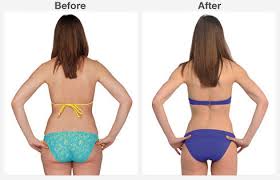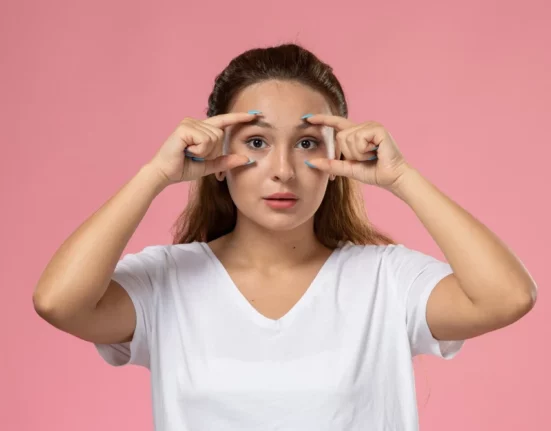The buttock lift is an increasingly common plastic surgery procedure that brings very good results thanks to the extent of its action. Indeed, it allows:
- to raise the buttocks
- to absorb the excess skin of the buttocks
- to reshape the buttock by self-augmentation or lipostructure flap
- to lift the lower back
- to lift the lateral aspect of the thighs.
Most often performed in a context of significant weight loss, coupled with an abdominoplasty, it is a body lift .
But the demands are more and more aesthetic in the woman or the man having, like the face or the breasts, undergone the effects of time and gravity on their buttocks.
WHAT IS BUTTOCK LIFT?
We can better visualize this intervention by imagining that we remove a strip of skin 15 to 25 cm high at the buttock. The resulting scar may appear large. But in fact, experience proves that if it is well positioned (and therefore easy to hide by a reduced underwear) and if the improvement in the silhouette is spectacular, it is very well accepted.
Upper buttock lift treats sagging buttock; the scar is placed in the upper part of the panties. Note that a self-increasing fat flap is possible to level the upper part and a fat transfer for the lower part.
Sometimes the excess skin of the buttock is very inferior. Only a lower buttock lift can treat it: see lower buttock lift.
BUTTOCK LIFT CANDIDATES
There are still 10 years, this operation was little practiced because little is known. But, in recent years, demand has greatly increased because of the large number of significant weight loss (and their processions of excess skin) due to gastric rings, leading to major technical progress in its realization.
Today, the operation has greatly improved and is sophisticated. Hayatmed clinic is offering BBL surgery to many more patients: in fact, all of those with sagging buttocks. The causes can be multiple:
- Massive weight loss is of course the most frequent cause occurring after diet, gastric band or bypass. Candidates for this surgery have lost several tens of pounds but there is often still fat to remove.
- obesity of the lower body, known as gynoid, which is resistant to diets
- age and alteration of post-menopausal skin elasticity: in the same way that we practice facelifts, we can practice buttock facelifts.
- the aftermath of liposuction which can leave an excess of skin if it was performed under a skin with low elastic capacity
- congenital fall of the buttocks and thighs: that is to say without real cause and from puberty the person with soft skin and sagging buttocks. The abdomen may be perfect and in this case we only perform the posterior part of the operation.
WHAT IS THE BUTT LIFT TECHNIQUE?
There is the upper buttock lift with a scar located in the upper part of the buttock, and the lower buttock lift with a scar placed in the groove under the buttocks. The two can be combined.
The incision is hidden in the panties or concealed in the groove under the buttocks.
Objectives: treatment of the buttocks, back and the outer face of the thighs
- In the buttocks, we keep all the fatty tissue, and only remove the skin. This well-vascularized fat is buried again under the detached skin of the buttock to recreate the curve and the fleshy body. The buttock is stretched by being pulled up
- Sometimes the skin excess of the buttock is very inferior: At this time a lower buttock lift is necessary with a scar hidden in the groove under the buttocks.
- On the back, we tighten it downwards, after liposuction, and removal of excess skin.
- At the level of the thighs, we perform a liposuction of the outer side of the thighs, then we remove the excess skin, and we lift the thigh upwards to correct the accordion effect.
WHAT IS THE RESULT OF THE BUTTOCK LIFT?
Part of the result is visible immediately because the re-tensioning of the skin is always spectacular. After three weeks the edemas start to go away and the result is even more impressive. As far as the scar is concerned, you should know that, although it generally fades well over time, it cannot disappear completely. In this regard, we must not forget that, if it is the surgeon who performs the sutures, the scar is the result of the patient.
In the case of a body lift, beyond the aesthetic improvement which is often appreciable, this intervention generally brings to the patient (or patient) a very clear improvement in terms of comfort. In addition, this functional improvement and psychological well-being help the patient in adjusting their weight balance.
When there is an excess of skin on the lower part of the buttock in isolation or despite having performed an upper buttock lift (case present here), a lift of the lower part of the buttock must be carried out. The crescent area is resected to absorb this dysgraceous excess.
LIMITATIONS OF BUTTOCK LIFT
- On the back: it only treats the back bulges located above the buttocks. An upper body lift can be performed to raise the upper back
- On the outside of the thighs: in some cases, there is still excess skin on the outside of the thighs despite the lift. It will then be necessary to perform a facelift of the inner thigh, which if not enough could be associated with a rare outer thigh lift, at the cost of a vertical scar on the outside of the thigh.
THE IMPERFECTIONS OF THE RESULT
Most often, a body lift provides a real service to patients, with obtaining a satisfactory result and in line with what was expected.
However, it is not uncommon for localized imperfections to be observed, without constituting real complications:
- Unsightly scars: it is impossible to predict how the scar will behave. Most often everything goes well and the scar, always red at the start, whitens in twelve to eighteen months. It can happen that it widens or thickens. In this case it is always possible to take it again under local anesthesia.
- Reappearance of excess skin: especially in patients who have lost much weight and whose skin has elastic fibers in poor condition. It is always possible to make touch-ups under local anesthesia to further improve the final result.
IS A BUTTOCK LIFT TREATMENT POSSIBLE?
When the request is made in a context of significant weight loss with an abdominal skin-fat apron, a request for prior agreement can be made.
There are fee overruns, possibly reimbursed by your mutual fund.
If these indications are not respected, the buttock lift is then considered as an intervention of cosmetic surgery, which is not covered by either social security or mutual insurance.
BUTTOCK LIFT PROCEDURE
WHAT HAPPENS BEFORE THE BODY LIFT?
2 plastic surgery consultations spaced at least 15 days apart are compulsory before a body lift, during which medical photographs are always taken.
- A lipopanty sheathing the abdomen and thighs is prescribed.
- The most important systematic medical instructions before a body lift are:
- strict cessation of smoking 2 months before the operation, to reduce the risk of skin necrosis.
- stop oral contraception 1 month before the operation, to reduce the risk of thromboembolism. Iron supplementation with tablets 1 month before the operation to reduce the consequences of operative bleeding.
WHAT IS THE TYPE OF ANESTHESIA FOR A BUTT LIFT?
The anesthesia is always general.
HOSPITALIZATION AND INTERVENTION
Hospitalization takes place in a clinic. The intervention lasts 2 hours on average. Hospitalization is on average 2 nights after the operation, which has been considerably shortened thanks to improvements in technique. Hospitalization may be longer depending on the amount of excess skin removed.
WHAT ARE THE USUAL AFTER-EFFECTS OF A BUTTOCK LIFT?
Recovery is rapid in the case of an isolated lift, longer in the case of a body lift. In case of a body lift, the swelling and bruising appear quickly and can be quite intense as well as fatigue and pain.
If the fatigue is too severe a blood transfusion may be indicated. As for pain, it is taken care of by anesthetists and is greatly reduced by powerful products.
- No drain
- The dressing is removed the second day after the operation. It aims to compress the detached areas during the first days. It is replaced by a sheath.
- Wearing a compression sleeve is essential for a month to limit edema.
- In order to reduce the risk of phlebitis, getting up early will be systematically encouraged, from the very evening of the operation. Likewise, an anticoagulant treatment by subcutaneous injections will be systematically prescribed for 15 days.
- The threads are absorbable.
- The first shower is authorized when returning home on your waterproof dressings.
- In a classic and usual way, there are during the first weeks or the first months following the operation:
- edema (swelling) and bruises (“bruises”). Of varying importance, they are often asymmetrical. They persist for at least 15 to 21 days.
- a decrease or disappearance of the sensitivity of the detached areas above the pubis for several weeks or several months. In addition, the detached areas remain indurated for several months.
- sometimes pain, which is well relieved by analgesic treatments. However, with concomitant treatment for diastasis of the rectus muscles, abdominal wall pain can be severe and lasting.
- The period of work stoppage is 3 weeks.
- The period of stopping sports activities is 2 months with prohibition of muscular effort (in particular the carrying of load).
- It is strongly recommended to resume sport from the 2nd month after the operation, in order to maintain the strengthening of the abdominal muscle strap carried out during the operation. Pregnancies and significant changes in weight are strongly discouraged after the operation, as they risk worsening the result.
POSSIBLE COMPLICATIONS
A buttock lift, although carried out for essentially aesthetic reasons, is nonetheless a real surgical intervention, which involves the risks associated with any medical act, no matter how small.
Regarding the surgical procedure: by choosing Dr Romain VIARD, a qualified and competent Plastic Surgeon, trained in this type of intervention, you limit these risks as much as possible, without however completely eliminating them. Fortunately, real complications are rare following a properly performed buttock lift. In practice, the vast majority of procedures go without any problems and patients are fully satisfied with their results.
However, and despite their rarity, you should still be aware of the possible complications:
- Thromboembolic accidents (phlebitis, pulmonary embolism), although generally quite rare after this type of intervention, are among the most formidable. Strict preventive measures must minimize the incidence: wearing anti-thrombosis stockings, getting up early, anticoagulant treatment.
- Bleeding: it is possible for the first few hours but is usually very moderate. When they are too important, it may justify a return to the operating room.
- Hematomas: they may need to be evacuated if they are large or too painful.






